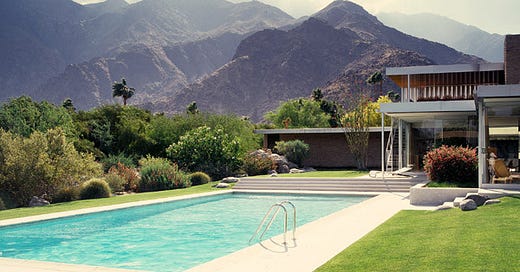If you’ve been here for a while, you’ve hopefully read my Design Icons entry and my Contemporary vs. Modern post. While those focus on well-known styles, there are many more worth exploring… and today, we’re diving into them.
We’ll start with the two most recognised styles, ones that often spark passionate debate. Which side of the design coin do you fall on: minimalist or maximalist?
Minimalism
Minimalism isn't just a trend, it’s a philosophy that gained momentum in the mid-20th century, influenced by Bauhaus functionalism, De Stijl abstraction, and Japanese Zen. Famous figures like Ludwig Mies van der Rohe and Tadao Ando championed the idea of “less is more,” reducing spaces to their purest forms and essentials.
When you think of a minimalist space, think of clean, silent, and almost meditative surroundings. Every detail is intentional, and the beauty lies in the simplicity. “God is in the details” as Mies once said, emphasizing the importance of proportion and materials. Ando, known for his concrete chapels, shows how light and shadow can breathe life into even the most austere spaces.
In a minimalist room, you’ll often see monochrome palettes, whites, grays, and blacks sometimes paired with accents of warm wood. Continuous surfaces like polished concrete, microcement, and plaster are key, and you'll find concealed infrastructure, like hidden storage or recessed lighting, to keep things sleek. The most striking feature? Light becomes as much a material as anything else, with skylights, clerestories, and reflective surfaces orchestrating a delicate dance of illumination.
The Brick Connection Villa in India (TRAANSPACE, 2021) is a perfect example. Pure red brick walls do double duty as structure and aesthetic. Inside, sliding-glass partitions and polished concrete floors work with whitewashed walls to highlight texture, not noise.
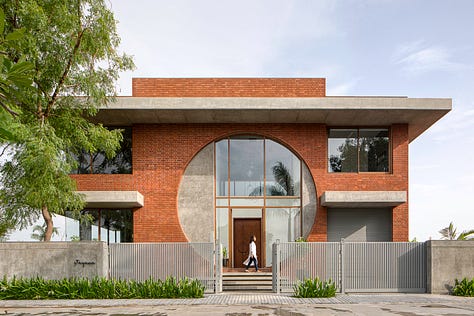
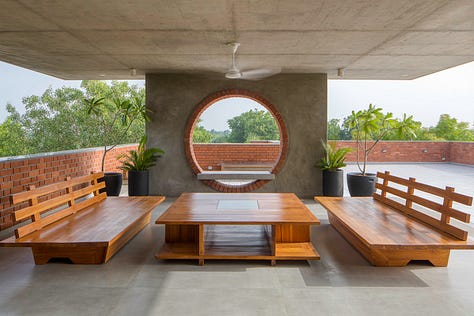
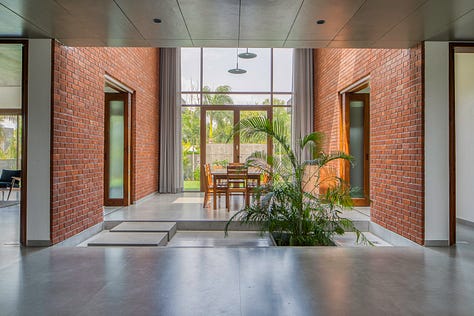
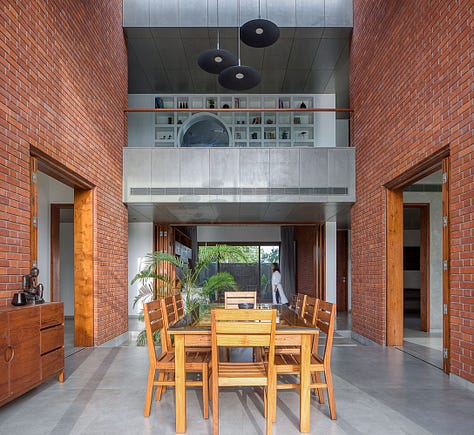
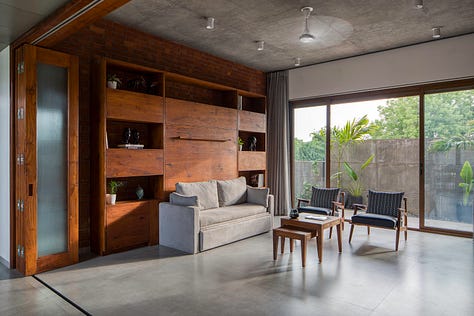
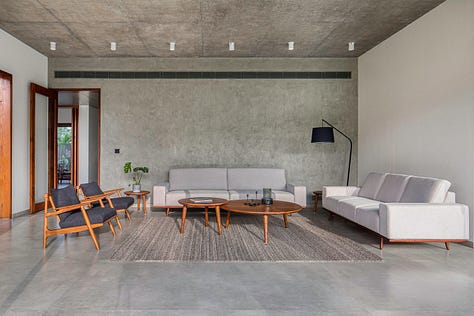

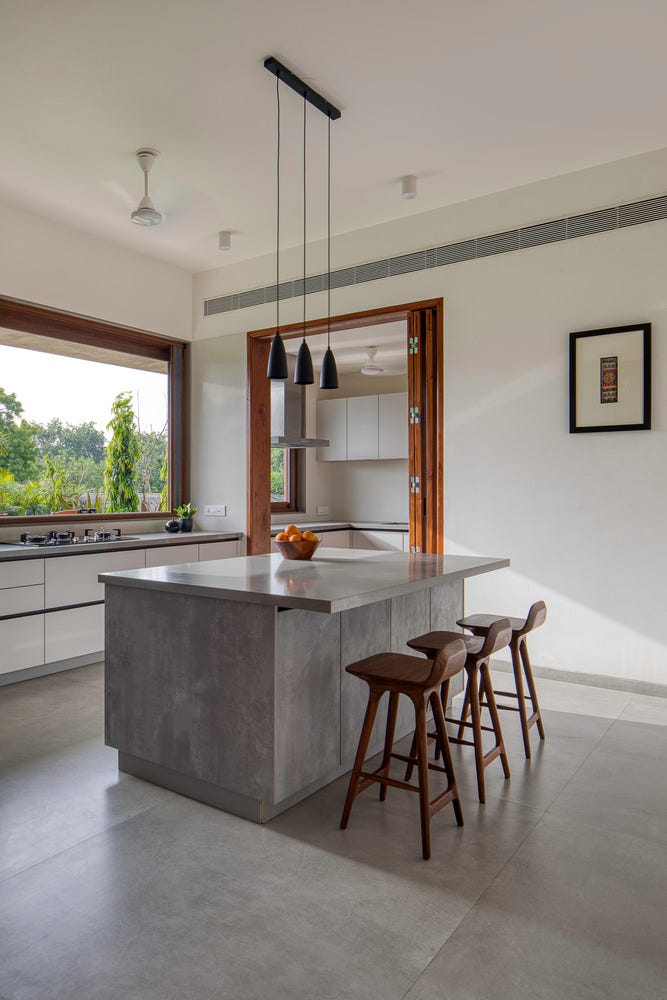
The ARC’TERYX flagship store in Jilin, China, which adopts a gallery‑like minimalist retail typology. Lacquered white walls, glass plinths, and a monolithic table all lit by clean linear LEDs, letting the products and space speak for themselves.





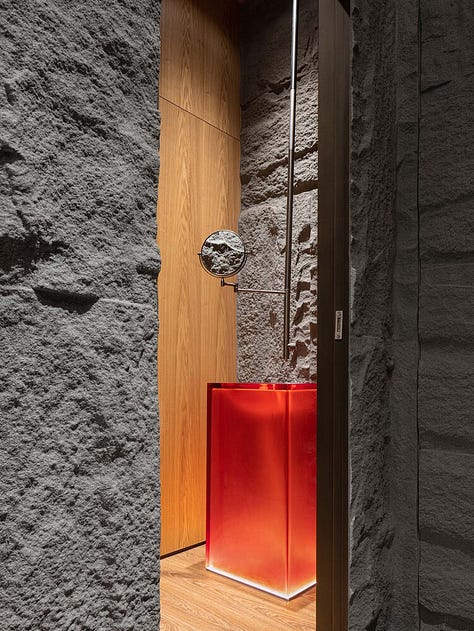
Maximalism
Now, swing to the other end of the spectrum… maximalism. The “more is more” mantra celebrates an eclectic mix of colors, patterns, and textures. It’s all about embracing layers, with no fear of contrast. Where Minimalism strips things down to essentials, Maximalism piles things on, creating a sensory-rich environment that’s bursting with personality.
Maximalism treats interiors like curated archives! Each object carries meaning, and the contrasts between them create a dynamic tension. There’s a sense of discovery in every corner, a new layer to uncover with each glance.
Bold palettes are a must here such as saturated jewel tones, intricate wallpapers, and clashing textiles. The furniture is eclectic, mixing antiques with contemporary pieces, global artifacts with bespoke millwork. Lighting, too, plays a big role, with chandeliers, sconces, and table lamps creating a rich, layered depth in the space.
Take the Fifth Avenue Apartment by Corey Damen Jenkins (2020). It’s unapologetically opulent with emerald silk ceilings, hand-painted chinoiserie murals, and Calacatta Viola marble inlaid with brass. Tapestries, crystal chandeliers, and no shortage of personality.




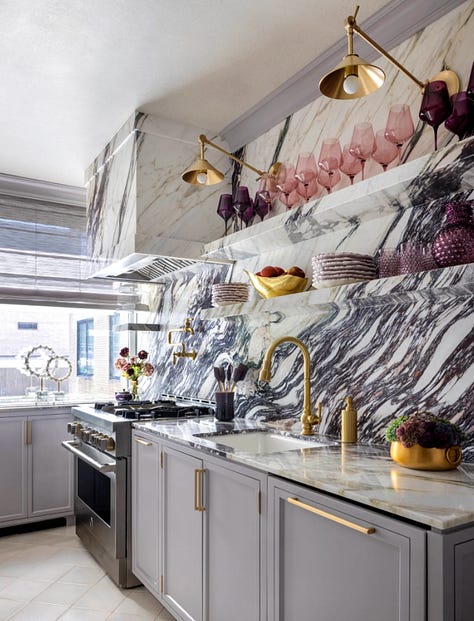

Or the Notting Hill Row House by Studio Duggan (2021). Hand-stenciled stripes, encaustic tile floors, and walls turned into art galleries. From Ottoman ottomans to mid-century chairs, it’s maximalism with structure & luxury, but disciplined.





Mid‑Century Modern
Now let’s talk about Mid-Century Modern (MCM) a style that emerged after World War II, drawing on optimism and the promise of industrial advances. It blends European modernist principles with American pragmatism, creating affordable, functional living spaces connected to nature.
MCM rejects historical pastiche and instead embraces open plans, honest structural expression, and a seamless integration of indoor and outdoor spaces. It’s a celebration of “truth to materials,” and the designs are all about functionality and simplicity.
Expect to see exposed steel frames, cantilevered rooflines, and wall-to-wall glazing in these spaces. MCM furniture is iconic you will see molded plywood, fiberglass shells, and tubular steel chairs (the famous Eames Lounge Chair for example). Finishes like terrazzo floors and warm teak or walnut wood make the design feel timeless.
The Kaufmann Desert House (1946–47) is basically the holy grail here. A series of pavilions organized around a central hub, with sliding glass dissolving the line between inside and out. When Marmol Radziner restored it in the ’90s, they relied on original drawings and vintage Shulman photos to get the details right.

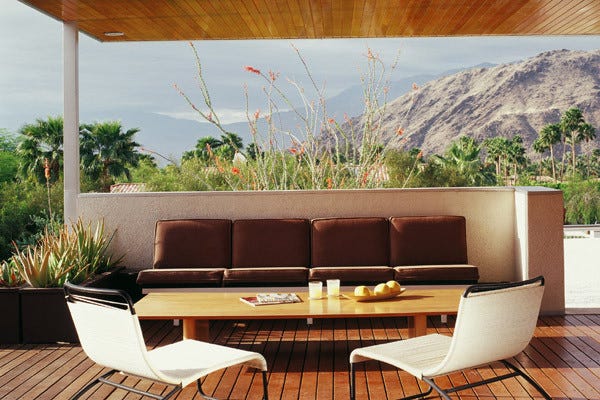
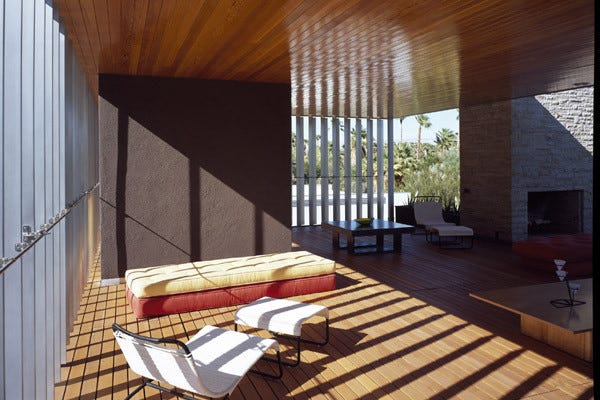
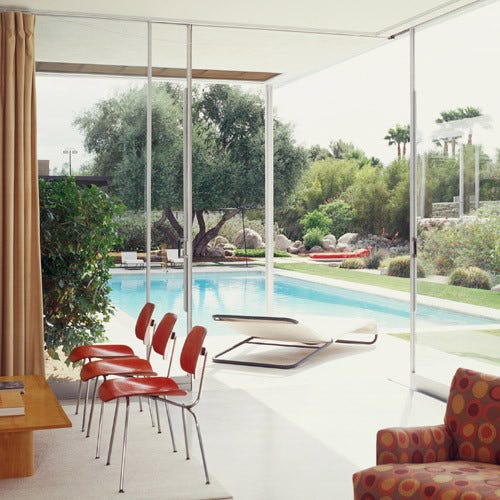
Restaurants like Father & Bun in Beirut (Atelier130, 2018) reimagines MCM with raw stone walls, walnut paneling, and modular leather seating. Iconic half‑globe pendant lights and terrazzo countertops round out the retro-modern space. Proof that the era still feels fresh.
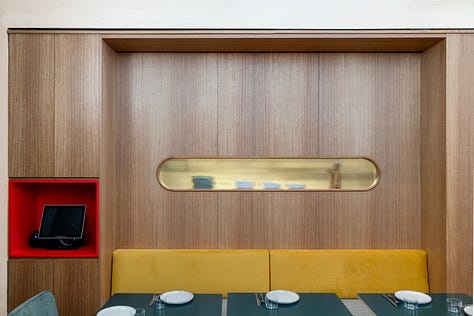

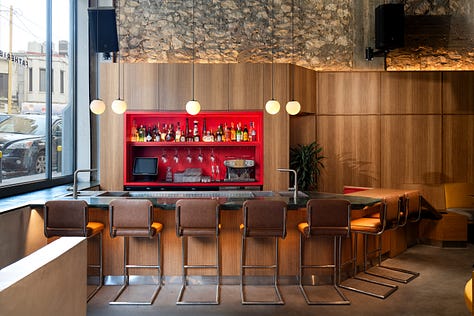

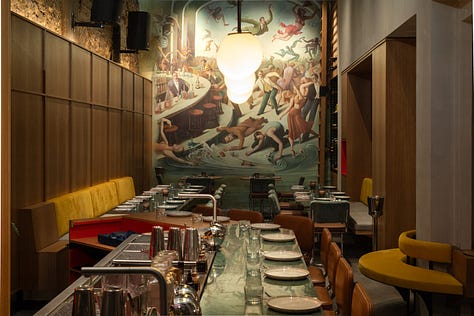
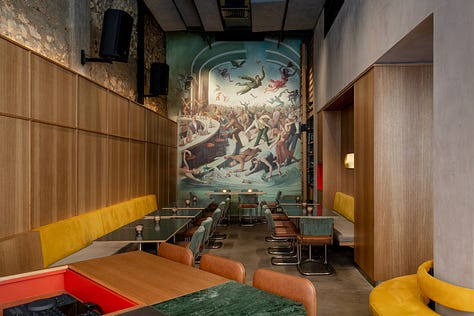
Scandinavian
Speaking of fresh, let’s head north with Scandinavian design! a style born from the early 20th-century Nordic countries and shaped by harsh climates and a focus on social welfare. This design style emphasises light, functional craftsmanship, and accessibility, making it warm, inviting, and easy to live with.
“Form follows human need” is the mantra here. Scandinavian furniture is ergonomically designed for comfort, with an emphasis on clean lines and soft curves. You’ll find natural materials like pale woods, wool throws, and sheepskin rugs to create a sense of cozy warmth, while layered lighting such as pendants, floor lamps, and candlelight contributes to a feeling of hygge (that Danish concept of warmth and contentment).
The Simonsson House (Claesson Koivisto Rune, 2018) on a Swedish lakeshore uses triple glazing, whitewashed timber, and built‑in benches to maximize winter light. A hearth‑centered plan and tactile textiles foster seasonal warmth.
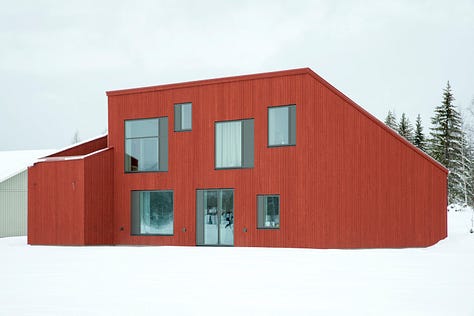


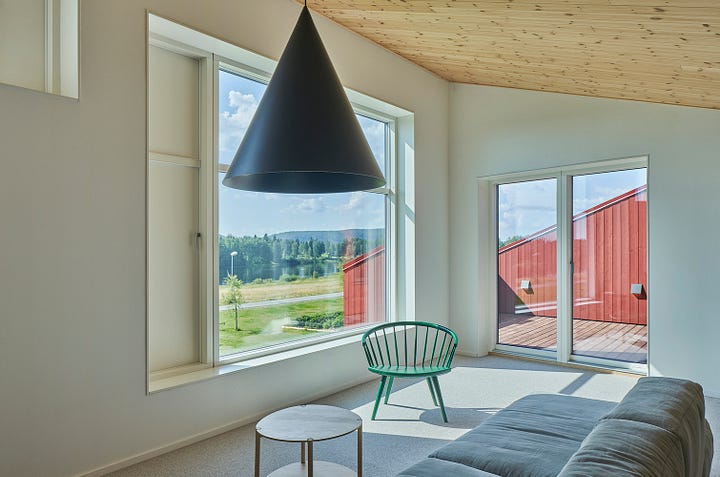

At Newport Coffee House (34‑TEN Architects, 2019) in Illinois, stainless-steel counters contrast with maple pews and bentwood stools, evoking communal hygge amid pendant lighting and greenery.
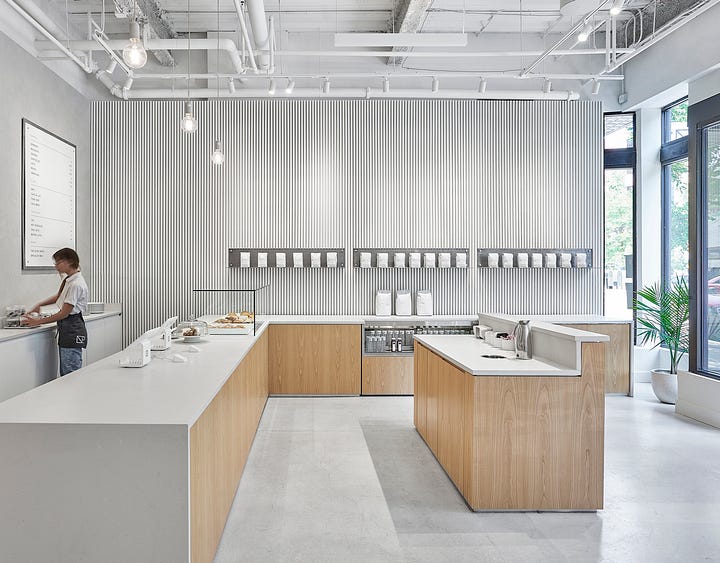
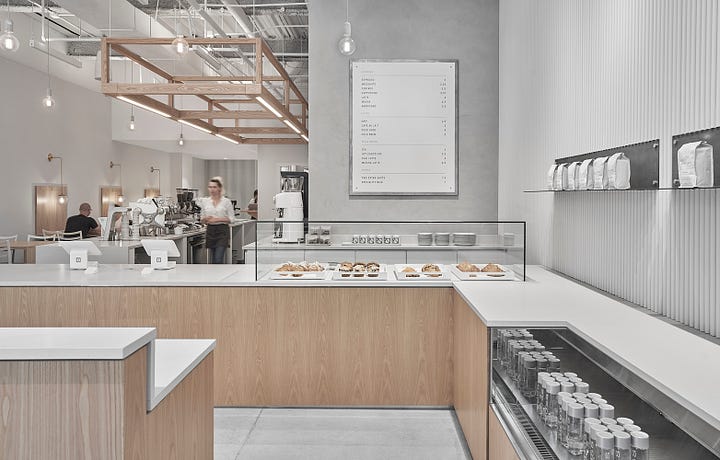


From the disciplined calm of minimalism to the expressive layers of maximalism, and the timeless warmth of Mid-Century Modern to the light-filled serenity of Scandinavian design, we’ve seen how each style carves its own path, each one a reflection of values, culture, and the way we want to move through space.
Next week, we’ll explore the second half of this design lineup! So if you're not already subscribed, now’s a great time to hit that button. That way, you’ll get Part 2 straight to your inbox and never miss a dose of design depth.

